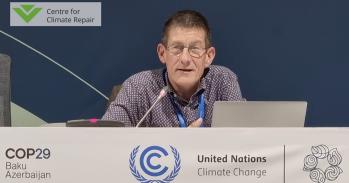
The largest coordinated programme of international polar activities in 50 years – International Polar Year (IPY) – kicked off globally on 1 March 2007. Building on a 125-year history of previous polar events in 1882–1883, 1932–1933 and 1957–1958, the aim of IPY is to promote even greater international scientific collaboration to address issues of global importance within the Arctic and Antarctic.
The largest coordinated programme of international polar activities in 50 years – International Polar Year (IPY) – kicked off globally on 1 March 2007. Building on a 125-year history of previous polar events in 1882–1883, 1932–1933 and 1957–1958, the aim of IPY is to promote even greater international scientific collaboration to address issues of global importance within the Arctic and Antarctic.
The international outreach component of each project is designed to present the polar regions in general and key IPY science issues in particular to people throughout the world.
Julian Dowdeswell
As well as seeking to make major advances in polar knowledge, a key theme is to leave a lasting legacy of polar data that will be of scientific and educational value for the future. All polar years have provided snapshots of the state of the polar regions at that time, giving us a baseline for past, present and future changes to be monitored and predicted. Each of the 200-plus international projects beginning this year is also committed to demonstrating cutting-edge science in real-time to schools and communities around the world.
This element of outreach is viewed by Professor Julian Dowdeswell, Director of the Scott Polar Research Institute (SPRI) in Cambridge, as vitally important for public engagement with polar science: ‘The international outreach component of each project is designed to present the polar regions in general and key IPY science issues in particular to people throughout the world.’
For SPRI, the impetus provided by IPY has strengthened and formalised links with other researchers in the UK and worldwide. Already internationally recognised for its work in geophysical, environmental and social sciences, SPRI has several activities that will take place during IPY.
SPRI projects are wide-ranging: from assessing the social, economic and cultural significance of Arctic reindeer and caribou hunting, to measuring and modelling changes to glaciers. Dr Ian Willis, studying the mass balance of glaciers in Svalbard and Iceland, stresses the importance of combining field-based, airborne and satellite remote sensing data to assess the current state of glaciers at the beginning of the 21st century. He adds, ‘Computer modelling can then link climate and the mass balance of glaciers in the past and be used to predict changes for the next 100 years – something that is of considerable significance to discussions of the effects of global warming on changes in sea-level.’
Professor Dowdeswell explains the importance of IPY: ‘The IPY should be a time for everyone to learn and reflect on regions of our world which few have visited but which are essential to the future well-being of all of us.’
For further information, please go to the SPRI website www.spri.cam.ac.uk
This work is licensed under a Creative Commons Licence. If you use this content on your site please link back to this page.





